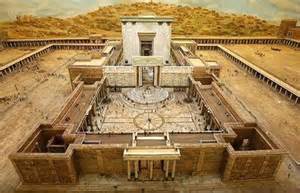TEMPLOS – Apresenta├º├úo
Templo (do latim templum, “local sagrado”) ├® uma estrutura arquitet├┤nica dedicada ao servi├ºo religioso. O termo tamb├®m pode ser usado em sentido figurado. Neste sentido, ├® o reflexo do mundo divino, a habita├º├úo de Deus sobre a terra, o lugar da Presen├ºa Real. ├ë o resumo do macrocosmo e tamb├®m a imagem do microcosmo: ‘o corpo ├® o templo do Esp├¡rito Santo’ (I, cor├¡ntios, 6, 19).
Todos os templos aut├¬nticos envolvem um simbolismo c├│smico. Podemos citar, como exemplo, o templo edificado por Salom├úo a Jeov├í. Ele representava o cosmo e cada objeto ali existente obedecia a uma ordem. O candelabro de 7 bra├ºos simbolizando os 7 planetas; a Mesa, a a├º├úo de gra├ºas por tudo que se realizou na ordem terrestre; sobre a mesa, 12 p├úes simbolizando os meses do ano: os p├úes da proposi├º├úo ou das faces divinas. A pedra fundamental do templo sendo o centro do mundo, ponto onde se comunicam o terrestre e o celeste. Dessa mesma forma, como centro do mundo, encontramos na ├ìndia, em Angkor, em Java, representa├º├Áes do monte Meru, que ├®, a um s├│ tempo, o eixo e o centro do mundo.
Fonte: Wikip├®dia, a enciclop├®dia livre.
***
Temple (the templum Latin, “holy place”) is an architectural structure dedicated to religious service. The term can also be used figuratively. In this sense, it is the reflection of the divine world, God’s dwelling place on earth, the place of the Real Presence. It is the summary of the macrocosm and microcosm also the image: ‘the body is the temple of the Holy Spirit’ (I Corinthians 6: 19).
All authentic temples involve a cosmic symbolism. We can cite, for example, the temple built by Solomon Jehovah. He represented the cosmos and there every existing object obeyed an order. The chandelier of 7 arms symbolizing the seven planets; Setting, thanksgiving for all that took place in the terrestrial order; on the table, bread symbolizing the 12 months of the year: the shewbread or divine faces. The foundation stone of the temple is the center of the world, communicate point where the terrestrial and the celestial. In the same way, as the center of the world, found in India, Angkor, in Java, representations of Mount Meru, which is, at the same time, the shaft and the center of the world.
**
Temple (templum latine, “lieu saint”) est une structure architecturale d├®di├®e ├á un service religieux. Le terme peut ├®galement ├¬tre utilis├® au sens figur├®. En ce sens, il est le reflet du monde divin, le lieu d’habitation de Dieu sur terre, le lieu de la pr├®sence r├®elle. Ce est le r├®sum├® du macrocosme et le microcosme aussi l’image: ┬½le corps est le temple du Saint-Esprit┬╗ (I Corinthiens 6: 19).
Tous les temples authentiques impliquent un symbolisme cosmique. On peut citer, par exemple, le temple construit par Salomon J├®hovah. Il a repr├®sent├® le cosmos et l├á chaque objet existant ob├®i ├á un ordre. Le lustre de 7 bras symbolisant les sept plan├¿tes; Param├¿tre, action de gr├óce pour tout ce qui a eu lieu dans l’ordre terrestre; sur la table, le pain symbolisant les douze mois de l’ann├®e: les pains de proposition ou faces divines. La premi├¿re pierre du temple est le centre du monde, de communiquer point o├╣ le terrestre et le c├®leste. De la m├¬me mani├¿re, comme le centre du monde, a trouv├® en Inde, Angkor, en Java, les repr├®sentations du mont Meru, qui est, en m├¬me temps, l’arbre et le centre du monde.
**
Templo (el templum Am├®rica, “lugar sagrado”) es una estructura arquitect├│nica dedicada al servicio religioso. El t├®rmino tambi├®n se puede utilizar en sentido figurado. En este sentido, es el reflejo del mundo divino, la morada de Dios en la tierra, el lugar de la Presencia Real. Es el resumen del macrocosmos y el microcosmos tambi├®n la imagen: “el cuerpo es el templo del Esp├¡ritu Santo” (I Corintios 6: 19).
Todos los templos aut├®nticos implican un simbolismo c├│smico. Podemos citar, por ejemplo, el templo construido por Salom├│n Jehov├í. Represent├│ el cosmos y all├¡ cada objeto existente obedeci├│ una orden. El candelabro de 7 brazos simbolizan los siete planetas; Ajuste, acci├│n de gracias por todo lo que tuvo lugar en el orden terrestre; sobre la mesa, el pan que simboliza los 12 meses del a├▒o: el pan de la proposici├│n o caras divinas. La primera piedra del templo es el centro del mundo, punto de comunicar que el terrestre y el celeste. De la misma manera, ya que el centro del mundo, que se encuentra en la India, Angkor, en Java, representaciones de Monte Meru, que es, al mismo tiempo, el eje y el centro del mundo.
**
Tempel (der templum Latein, “heiliger Ort”) ist eine Architekturstruktur, zum Gottesdienst gewidmet ist. Der Begriff kann auch im ├╝bertragenen Sinne verwendet werden. In diesem Sinne ist es das Spiegelbild der g├Âttlichen Welt, die Wohnung Gottes auf der Erde, die Stelle der wirklichen Gegenwart. Es ist die Zusammenfassung der Makro- und Mikrokosmos auch das Bild: “Der K├Ârper ist der Tempel des Heiligen Geistes” (I Korinther 6, 19).
Alle authentischen Tempeln beinhalten eine kosmische Symbolik. Wir k├Ânnen zu nennen, zum Beispiel den Tempel von Salomo Jehova gebaut. Er vertrat den Kosmos und dort jedes vorhandene Objekt gehorcht einen Auftrag. Der Kronleuchter von 7 Arme symbolisieren die sieben Planeten; Einstellung, Dank f├╝r alles, was in der irdischen Ordnung stattgefunden haben; auf dem Tisch, Brot als Symbol f├╝r die 12 Monate des Jahres: die Schaubrote oder g├Âttliche Gesichter. Der Grundstein des Tempels ist das Zentrum der Welt zu kommunizieren Punkt, wo der terrestrischen und der himmlische. In der gleichen Weise, wie das Zentrum der Welt, in Indien, Angkor gefunden, in Java, Darstellungen des Mount Meru, das ist zugleich, die Welle und das Zentrum der Welt.

